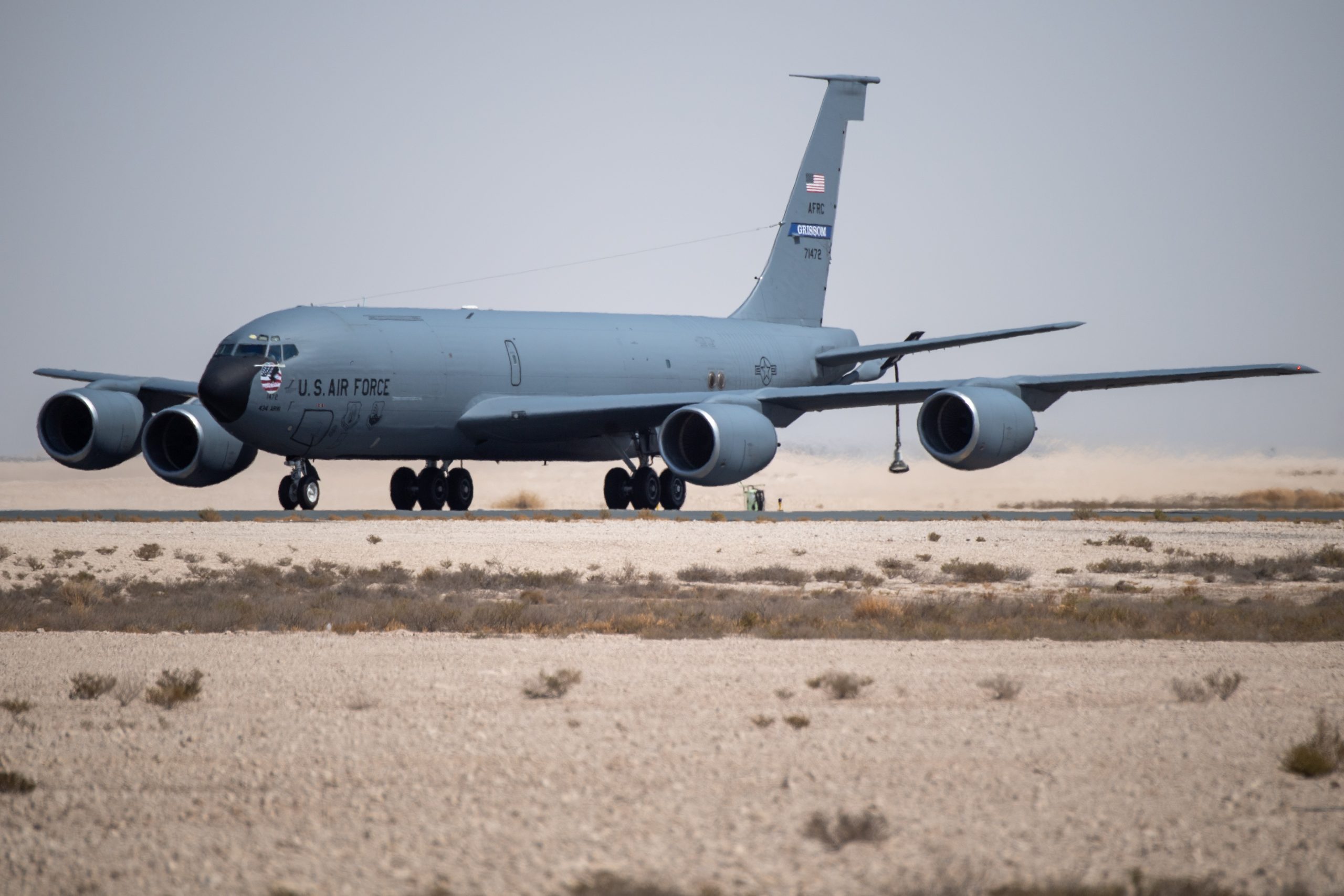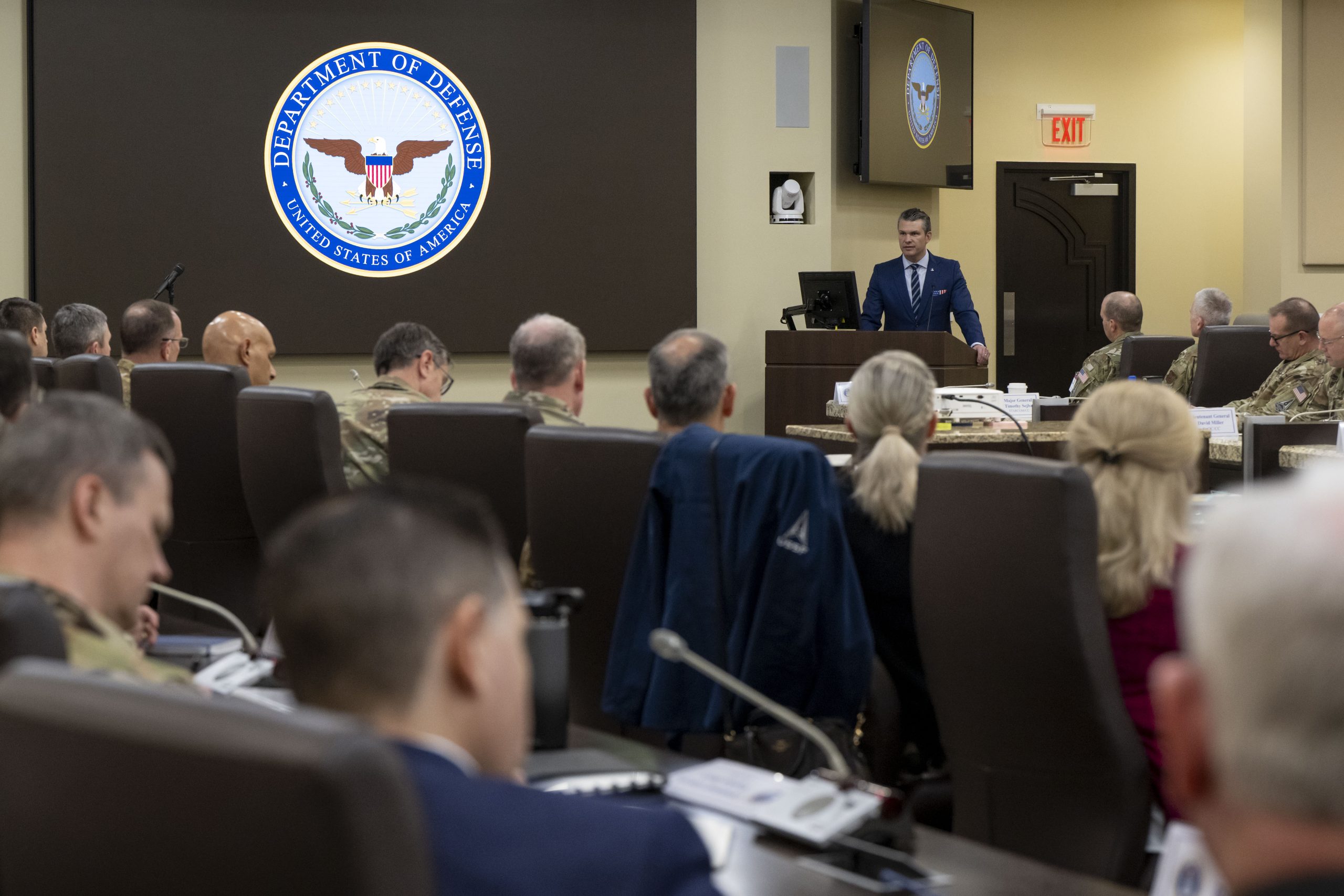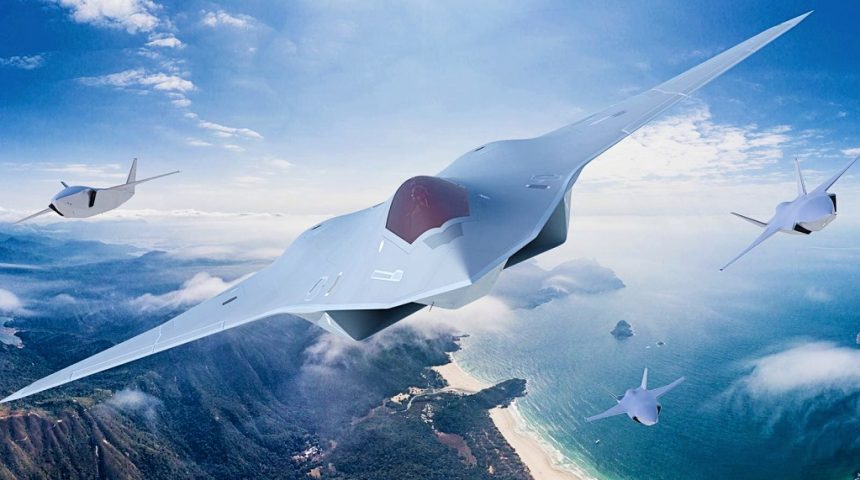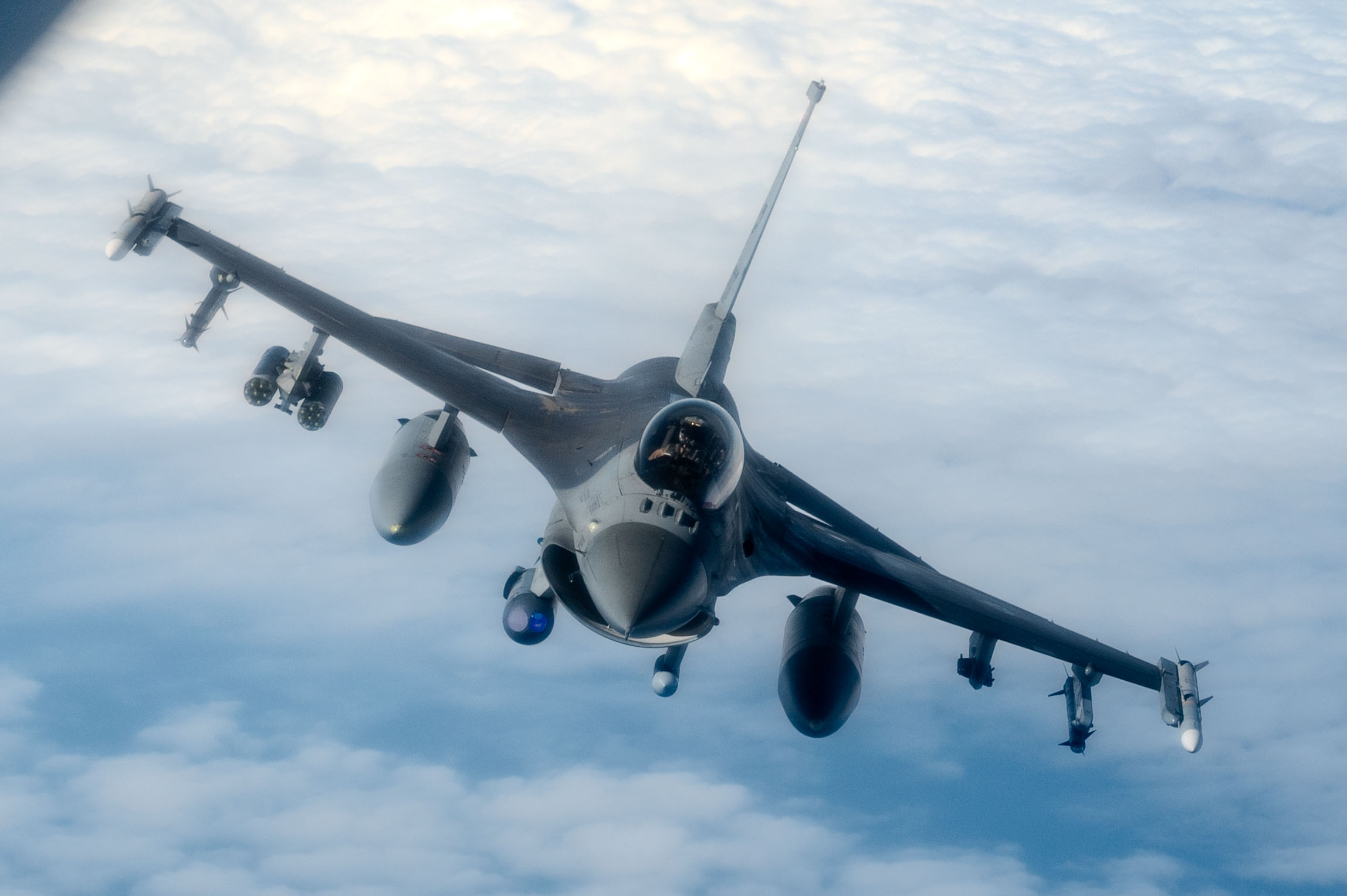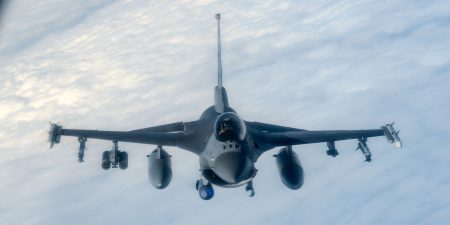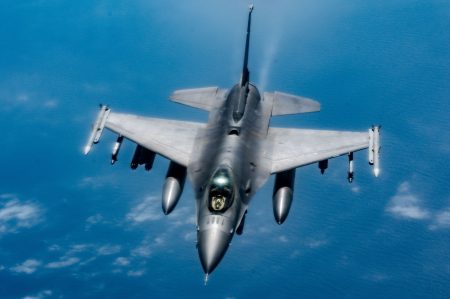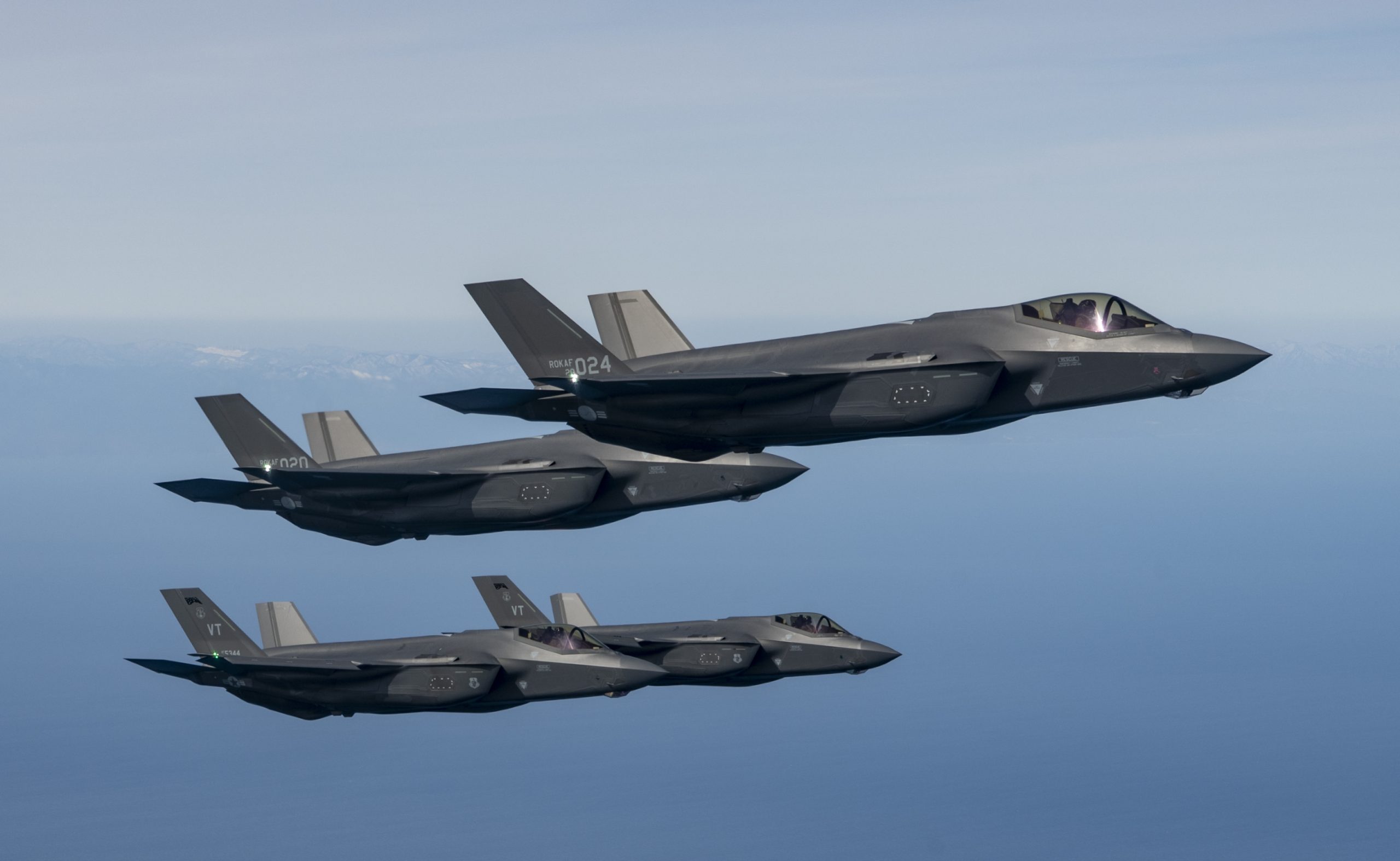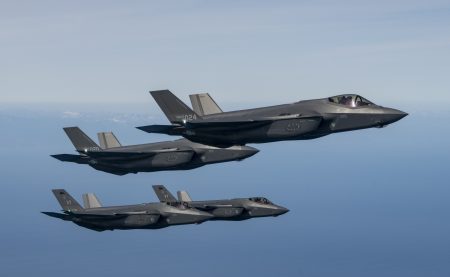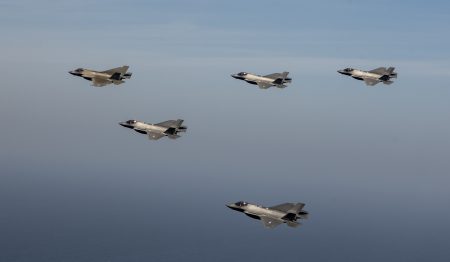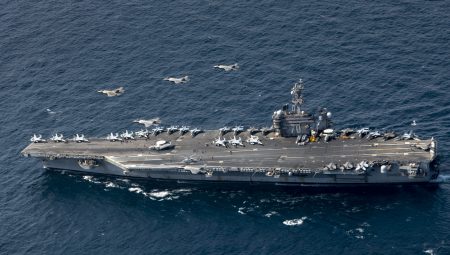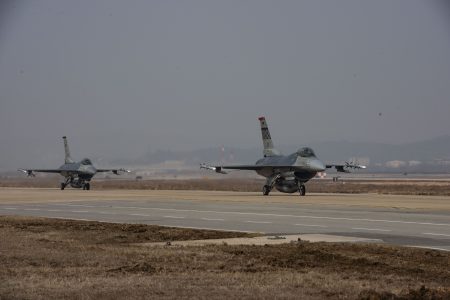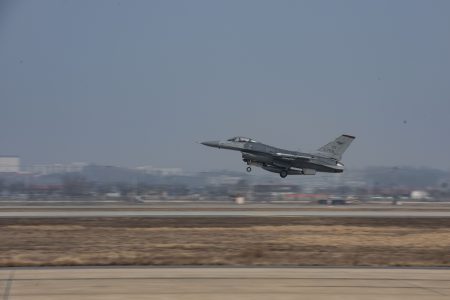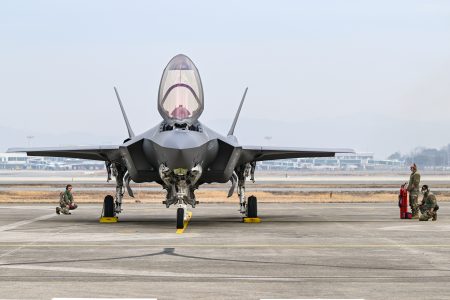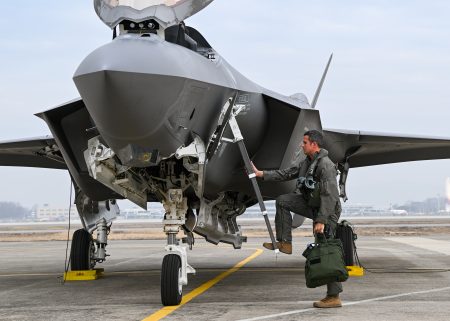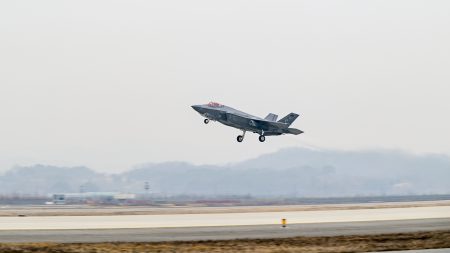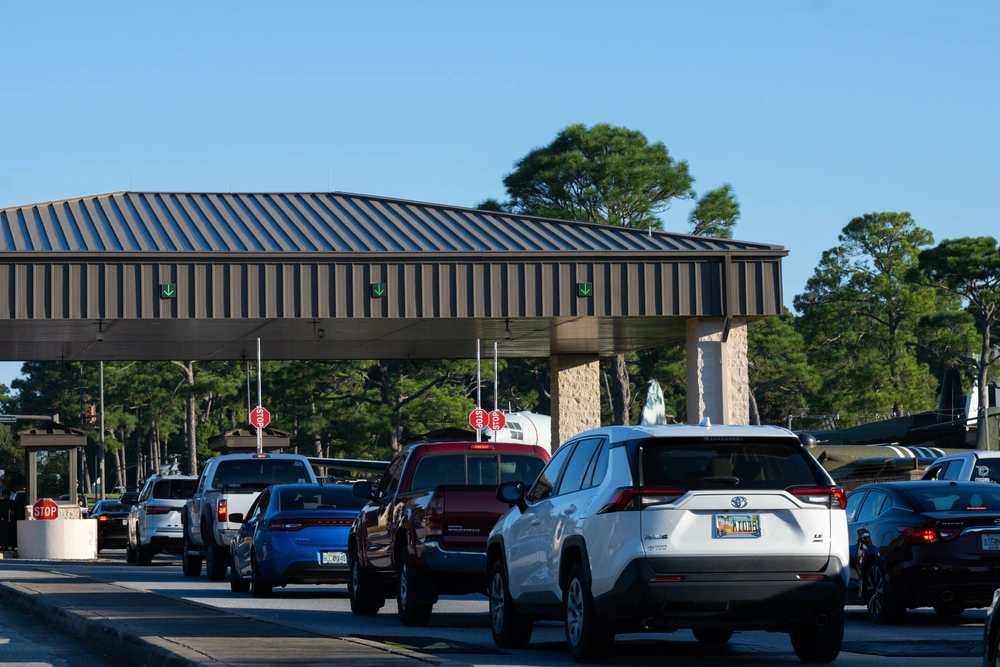At the Air Force’s current rate of 15 new aerial tankers a year, the service have to launch a service life extension program for its Eisenhower-era KC-135s, the head of Air Mobility Command said.
Meanwhile, leaders stressed the importance of more connectivity and survivability for AMC’s tanker fleet, even as they suggested they may be prepared to delay a new, stealthy refueling aircraft.
The Air Force “may need to look at service life extension, potentially, of the KC-135,” Gen. John D. Lamontagne said in a prerecorded interview with Defense One streamed March 20.
“Recapitalization of the tanker fleet is absolutely a priority,” he said, but “it’s going to take a really long time” to acquire replacements for the youngest KC-135s, all of which are more than 60 years old.
“We have continued to upgrade the KC-135, and we need to keep doing that,” Lamontagne said. “If we recapitalize the KC-135 to the tune of a squadron a year—which is typically how we acquire platforms—we’ll be flying the KC-135 into the 2050s. … I think that’s where we’re headed.”
That timeline would put the KC-135’s service life near 100 years. Already, the fleet has been re-engined, re-skinned, and received numerous structural and avionics upgrades since it was built. But the last major refresh of the fleet was in the 2010s, when the Block 45 upgrade gave the refueler additional capability and life to last into the 2040s.
The KC-135 is “not the same airplane it was when it came into the inventory,” and no longer needs a navigator due to avionics improvements, Lamontagne said.
The general did not comment on how extensive a SLEP might be needed on the Stratotanker, but such programs are generally not undertaken unless the Air Force believes the cost can be recouped within 10-20 years through reduced maintenance and spare parts consumption, fuel efficiency, or other metrics.
For the mobility fleet writ large, “the next couple of upgrades need to be that beyond-line-of-sight connectivity; tactical data links, so we have good [situational awareness] on our environment,” Lamontagne said.
NGAS
A yearlong analysis of alternatives (AOA) on the Air Force’s future aerial tanking fleet is receiving “finishing touches,” Lamontagne said, and should be concluded by around the end of March.
The Air Force has dubbed its next planned tanker the Next-Generation Aerial refueling System, or NGAS.
“No decisions have been made” about NGAS, Lamontagne said, but he acknowledged that the way ahead will be affected by how the Trump administration chooses to proceed with the Next-Generation Air Dominance (NGAD) fighter.
Whether the NGAS moves ahead will be a budget-driven decision, Lamontagne said. If it is deferred, “I’ll just say there’s a variety of ways” for the KC-135 “to survive,” he added.
“We can continue to upgrade the fleet and put defensive systems on it, just like we’ve upgraded the navigation, the engines and more over the past decades,” he said. “We can also team up with other partners in the joint force and have them defend us. And so, a variety of ways to do it, even if we don’t pursue NGAS.”
In a separate interview with Defense One also streamed March 20, Chief of Staff Gen. David W. Allvin said NGAS is not necessarily an aircraft, but a system of aerial refueling, and if it is postponed, “there are other ways that you can enhance survivability of a refueling aircraft,” he said.
“You can do it through electronic warfare. You can do it through…escort support. So this is all part of the entire NGAS evaluation,” he said. “It just means a new way to ensure survivability in a denser threat environment. I think that that analysis will be ongoing.”
He also said a “baseline” approach to survivability “is connectivity. So, ensuring that we can have connectivity between our aerial refueling platforms and our airlift platforms and our fighter platform, that’s what that’s something we’re pursuing.”
The Air Force’s top force designer, Maj. Gen. Joseph D. Kunkel, recently said that NGAD, NGAS, and Collaborative Combat Aircraft are “a package deal,” and decisions made about any of the three affect the other two.
KC-46
Before NGAS, Lamontagne said the Air Force wants to keep tankers in production “without a break.” That’s led to descriptions of a “bridge” buy of 75 tankers; Boeing is considered the main contender with an upgraded version KC-46, but the AMC boss said the firm does not have a lock on the program. Other suppliers have credible tanker offerings, he said, some of which don’t require a human crew.
In the meantime, deliveries of the KC-46 are currently suspended as Boeing investigates the root cause of a series of cracks in an outboard wing trailing edge. Once that is accomplished, “it’s a pretty quick fix” with the appropriate spare parts, he said, and deliveries can resume. Eleven of 50 KC-46s inspected so far have had cracks in the structure, and another 39 are to be inspected within the next two weeks, he noted. He left it to Air Force Materiel Command to say when deliveries would resume, but “repair should flow pretty quickly” after the root cause is determined.
Most of the other, more chronic deficiencies with the KC-46 are still being worked on, Lamontagne reported.
“We have made a lot of progress,” he said. “Some number of those [Category 1] deficiencies have been taken off the board and resolved. A couple of others are in the works and will deliver within the next year or two.”
Future Tech
Lamontagne also speculated on the requirements for a future airlifter to succeed the C-5 and C-17—the Next-Generation Airlift aircraft, or NGAL—saying it will not only have to be stealthy, but will have more missions than simply hauling people and cargo.
“We’re doing the capabilities-based assessment right now,” he reported. “That will take a couple of months to deliver, and it is basically evaluating, ‘hey, what kind of capabilities do we need in the future?’”
Lamontagne said key factors will include cargo capacity, range, survivability, and connectivity.
“I’d also say, we shouldn’t just look at it as an airlifter. … We should be doing more than one thing on an airplane, and I think the CBA will eventually lead to an [analysis of alternatives] and hopefully tease out some of the capabilities and the right things to make our Air Force and the joint force stronger,” he said.
The Air Force has in recent years conducted “Rapid Dragon” experiments that involved dropping whole pallets of cruise missiles out the backs of airlifters.
Lamontagne also said AMC is watching progress with Collaborative Combat Aircraft closely. He believes “the sky’s the limit” on how the technology of autonomous aircraft could be applied to the mobility mission.
“I could see a future where we are delivering [CCAs] maybe through the air,” he said, though for now AMC will just support the drones logistically.
Looking further down the road, though, the general said he could envision “unmanned airlifters, unmanned tankers.” CCA technology is moving “very, very rapidly,” he said, “And I think there’s a lot of opportunity in front of us in that space. … I think this is all very much in the realm of possible.”
